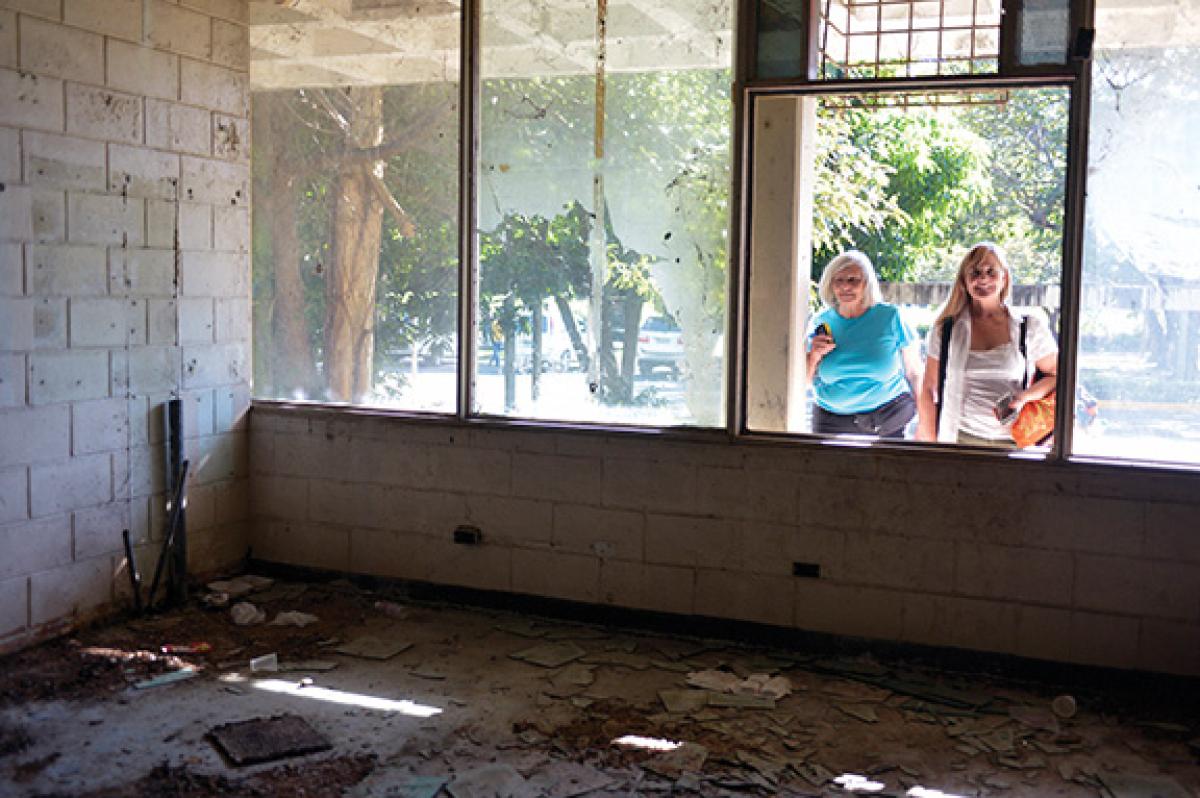For a host of veterans of the Vietnam era, a touchstone of memory is the naval base at Subic Bay in the Philippines. At the time, its location made the base a natural for support of the U.S. effort in Southeast Asia. It offered a logistics storehouse, ship repair facility, naval air station, and a place for Navy and Marine Corps personnel to relax and live it up. Now, more than 20 years since the base closed down at the behest of the Philippine government, the locale has re-emerged in value as U.S. strategy pivots to the Pacific. On a limited basis, Navy ships are using it as a stopping-off place.
A river bridge linked the old base to the civilian world. The community of Olongapo on the other side of that river was a place that struck some as out of this world. The city provided a cornucopia of entertainment, often of the raunchy variety. Chris Reed, a young officer on board the battleship New Jersey (BB-62) in 1968, summarized its appeal: “It was a young sailor’s dream come true. . . . Terrific music, plus there was booze, and there were girls. . . . It was like a [school] dance, except that you could get drunk, and you could take a girl home.”
Among its many services, the shipyard portion provided voyage repairs after the carrier Forrestal (CVA?59) and Australian destroyer Hobart suffered damage off Vietnam. Marines from amphibious-warfare ships went ashore to do more rigorous training and conditioning than they could on board ship. Aircraft carrier aviators got to put their feet on dry land, and some of their exploits in the Cubi Point officers’ club bar became the stuff of legend.
Subic was a place where replenishment ships loaded before heading to Vietnam. Captain Hal Shear of the Sacramento (AOE?1) found one particular commodity to be in high demand. Marines in Chu Lai, south of Da Nang, sought beer in large quantities. The ship would load up in Subic, steam to Vietnam, and Marine helos would fly out to claim their treasure. Shear asked for, and got, cash on the barrelhead from the Marines. Eventually, the order reached 200 cases a trip.
As the years passed, and the U.S. effort in Vietnam fizzled to a sad end, Subic took on another role—a transit point for people coming out of Vietnam. When American prisoners of war were released in early 1973, they passed through the Philippines on their way home. One of those was Captain Bill Lawrence, whose wife had divorced him in absentia. The base commander in Subic then was Rear Admiral Don Shelton, who took on the gloomy chore of informing his friend and fellow naval aviator.
In the spring of 1975, North Vietnam overran its enemy to the south, leaving a horde of South Vietnamese to escape by whatever means possible. The Philippine government had great reluctance in providing a haven and made it clear that the stays in transit had to be brief. The challenge for Shelton’s command was to find a place to provide lodging, food, and medical care for the refugees—all the while minimizing their impact in the area.
The solution was to put the refugees on Grande Island, in the mouth of Subic Bay. There they could be taken care of but also prevented from dispersing before flights took them to their next destination, Guam. One hot potato was Nguyen Cao Ky, former prime minister and vice president of South Vietnam. His stopover time, Shelton related, was minimal. From the helicopter that brought him in, he stepped onto a group of pallets, rather than the ground, and then directly into the belly of a waiting transport plane.
While all this was going on, the children of Americans stationed in the area attended George Dewey High School. It had been established in 1956 and was named for the victor at the 1898 Battle of Manila Bay. One of those students was Admiral Shelton’s daughter, now Donna Kacmarcik. When she reached the school as a senior in 1973, it was a culture shock, because she had expected to graduate in Northern Virginia. She found, though, that she soon formed bonds with her fellow expatriates, for they were all in it together.
The friendships forged back then have strengthened over the years because of shared memories and connections through Facebook. Ruben Pandes, class of 1975, is head of the alumni association. The former students have come back together at several locations in the United States for reunions and have established a scholarship fund to benefit Filipino students. Earlier this year, they returned to where they had met.
Not surprisingly, much has changed in Subic Bay. Kacmarcik saw a few U.S. Navy ships, but their presence was only a minute fraction of the number during the bustling times of war. Over the years, some buildings of the former base have been taken over by commercial enterprises. Others showed signs of heavy deterioration. The old high school is essentially a shell with windows gone, paint peeled, and shards of walls crumbled in heaps. A large painted globe stands as a brightly colored marker of times long gone. The old officers’ club is now a casino. Much of the base is a ghost town. The city of Olongapo shows scant signs of urban renewal.
Revisiting the physical remnants of the past can pluck strong chords within the memory. For Donna Kacmarcik, the experience of seeing both the old locale and her old friends rated 9 on an emotional scale of 10. A high point was visiting the home in which she had lived and seeing her old bedroom. With it all, there were some familiar signs that the American influence is still present: McDonald’s, Starbucks, and Dunkin’ Donuts.



